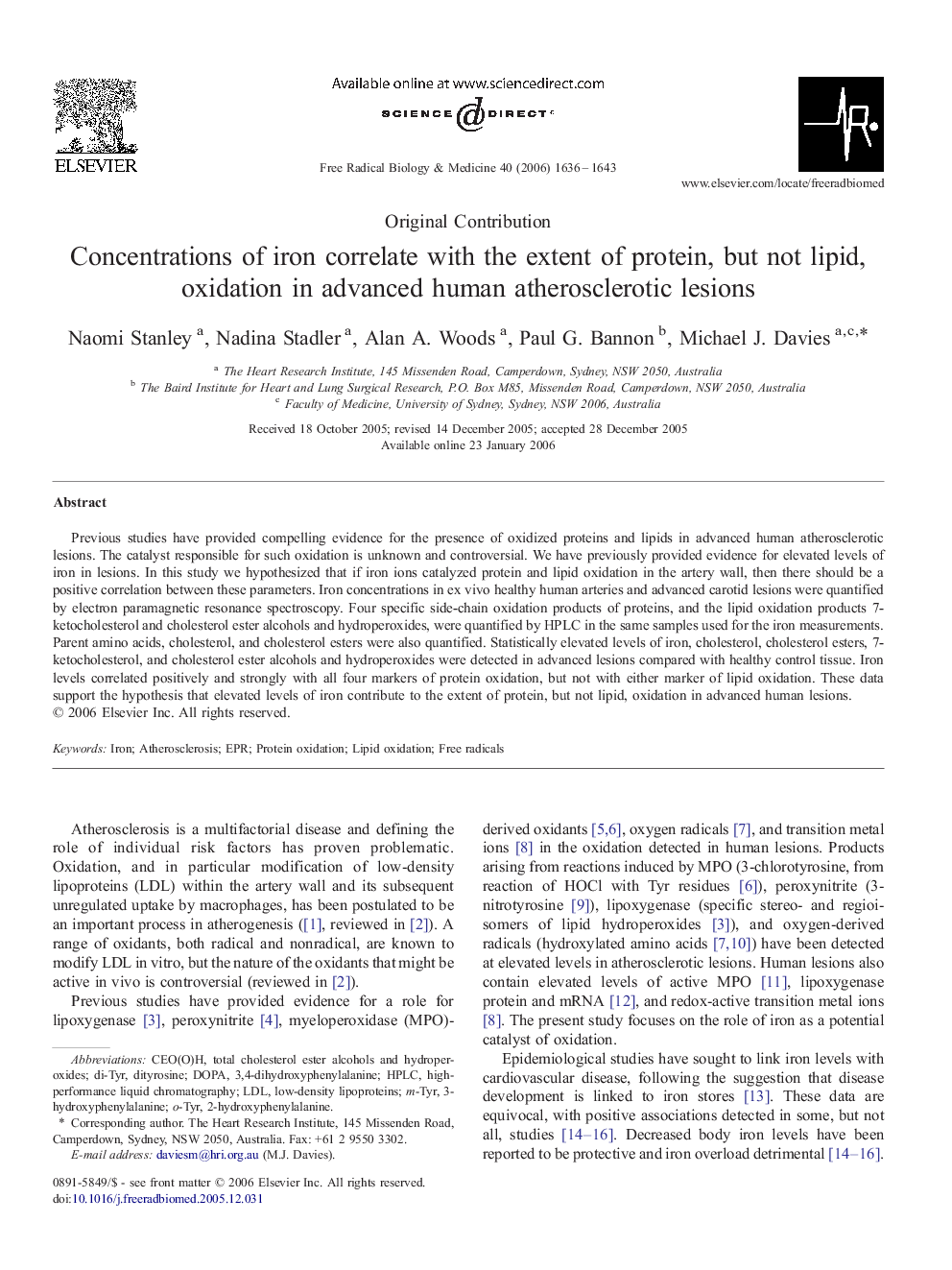| Article ID | Journal | Published Year | Pages | File Type |
|---|---|---|---|---|
| 1911422 | Free Radical Biology and Medicine | 2006 | 8 Pages |
Previous studies have provided compelling evidence for the presence of oxidized proteins and lipids in advanced human atherosclerotic lesions. The catalyst responsible for such oxidation is unknown and controversial. We have previously provided evidence for elevated levels of iron in lesions. In this study we hypothesized that if iron ions catalyzed protein and lipid oxidation in the artery wall, then there should be a positive correlation between these parameters. Iron concentrations in ex vivo healthy human arteries and advanced carotid lesions were quantified by electron paramagnetic resonance spectroscopy. Four specific side-chain oxidation products of proteins, and the lipid oxidation products 7-ketocholesterol and cholesterol ester alcohols and hydroperoxides, were quantified by HPLC in the same samples used for the iron measurements. Parent amino acids, cholesterol, and cholesterol esters were also quantified. Statistically elevated levels of iron, cholesterol, cholesterol esters, 7-ketocholesterol, and cholesterol ester alcohols and hydroperoxides were detected in advanced lesions compared with healthy control tissue. Iron levels correlated positively and strongly with all four markers of protein oxidation, but not with either marker of lipid oxidation. These data support the hypothesis that elevated levels of iron contribute to the extent of protein, but not lipid, oxidation in advanced human lesions.
